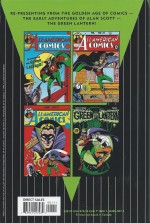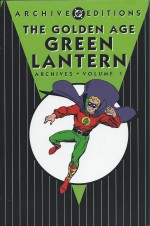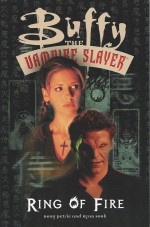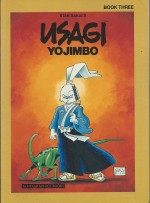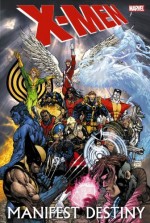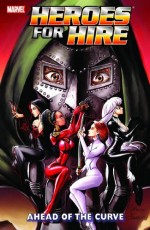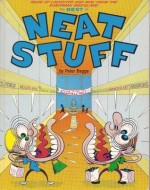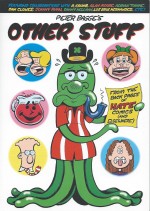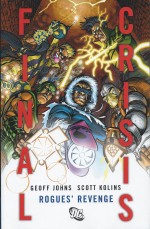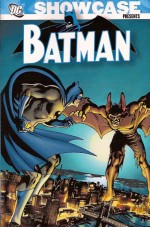
By Frank Robbins, Dennis O’Neil, Mike Friedrich, Irv Novick, Bob Brown, Neal Adams, Dick Giordano, Joe Giella & various (DC Comics)
ISBN: 978-0-85768-853-8
After three seasons (perhaps two and a half would be closer) the overwhelmingly successful Batman TV show ended in March, 1968. It had clocked up 120 episodes and a movie since the US premiere on January 12, 1966 and triggered a global furore of “Batmania†and indeed hysteria for all things zany and mystery-mannish.
As the series foundered and crashed the global fascination with “camp†superheroes – and yes, the term had everything to do with lifestyle choices but absolutely nothing to do with sexual orientation, no matter what you and Mel Brooks might think about Men in Tights – burst as quickly as it had boomed, and the Caped Crusader was left with a hard core of dedicated fans and followers who now wanted their hero back.
For character editor Julius Schwartz – who had tried to keep the most ludicrous excesses of the show out whilst still cashing in on his global popularity – the reasoning seemed simple: strip out the tired gimmicks and gaudy paraphernalia and get him back to solving baffling mysteries and facing genuine perils as soon and as thrillingly as possible.
This also meant slowly phasing out the boy sidekick…
Many readers were now acknowledged as discerning, independent teens and the kid was no longer relevant to them or the changing times. Although the soon-to-be college-bound freshman Teen Wonder would still pop back for the occasional guest-shot yarn, this fifth astoundingly economical monochrome monument to comics ingenuity and narrative brilliance would see him finally spread his wings and fly the nest for an alternating back-up slot in Detective, shared with relative newcomer Batgirl in stirring hip and mod solo sallies.
Collecting the newly independent Batman‘s cases from September 1969 to February 1971 (issues #216-228 of his own title as well as the front halves of Detective Comics #391-407), the 30 stories gathered here – some of the Batman issues were giant reprint editions so only their covers are reproduced within these pages – were written and illustrated by an evolving team of fresh-thinking creators as editor Schwartz lost many of his elite stable to age, attrition and corporate pressure.
However the “new blood†was fresh only to the Gotham Guardian, not the industry, and their sterling efforts deftly moulded the character into a hero capable of actually working within the new “big things†in comics: suspense, horror and the supernatural…
During this pivotal period the long slow road to our scarily Dark Knight gradually revealed a harder-edged, grimly serious caped crusader, even whilst carefully expanding the milieu and scope of Batman’s universe – especially his fearsome foes, who slowly ceased to be harmless buffoons and inexorably metamorphosed into the macabre Grand Guignol murder fiends of the early 1940s…
The transformational process continued here with the Frank Robbins-scripted Detective #391, as ‘The Gal Most Likely to Be – Batman’s Widow!’ (illustrated by Bob Brown & Joe Giella) saw the fleeting return of abortive modern love interest Ginny Jenkins who had become the passing fancy of mobbed-up publisher and extortionist Arnie Arnold.
By crushing the crooked editor’s scam to fleece Gotham’s society eateries, Batman paved the way for Ginny to settle down with the true man of her dreams…
Robbins (illustrious creator of newspaper strip Johnny Hazard) always had a deft grip on both light adventure and darker crime capers as seen in issue #392’s ‘I Died… A Thousand Deaths!’ wherein the Gotham Gangbuster’s plan to take down mobster Scap Scarpel went dangerously awry after trusting a less than honest “confidential informantâ€. In Batman #216 (November 1968), Robbins gave faithful butler Alfred a surname (after thirty years of service) by introducing the old retainer’s niece Daphne Pennyworth in ‘Angel – or Devil?’ (art from Irv Novick & Dick Giordano).
The aspiring actress had become ensnared in the coils of a band of very crooked travelling players and nearly became their patsy for murder…
In an era where teen angst and the counter-culture played an increasingly strident part in the public consciousness, Robin’s role as spokesperson for a generation was becoming increasingly important, with disputes and splits from his senior partner constantly recurring.
A long overdue separation came in Detective #393’s ‘The Combo Caper!’ (Robbins, Brown & Giella) as Bruce Wayne and Dick Grayson took a young delinquent with them on their last vacation together, embroiling Batman and Robin in a sinister string of high end gem heists…
The partnership ended in Batman #217 and ‘One Bullet Too Many!’ (Robbins, Novick & Giordano) as Dick shipped out for Hudson University and Batman undertook a radical rethink of his mission and goals.
Dapper Gentleman’s Gentleman Alfred became a far more hands-on part of the mythology – like Margery Allingham’s Magersfontein Lugg from the Albert Campion mysteries rather than Wodehouse’s smugly unflappable Jeeves – from this point on: shutting up the stately Manor and moving the Batcave into the basement of the Wayne Foundation in the heart of the city where all the crime and injustice actually lurked…
The first case – a brilliant old-fashioned whodunit – of the streamlined setup involved the unsolved murder of a paediatrician, but the real innovation was the creation of a new Wayne Foundation outreach project: the Victims Incorporated Program which saw both superheroism and philanthropy combine to provide justice for those who couldn’t afford to buy it…
The scheme immediately hit a deadly snag in Detective #394’s ‘A Victim’s Victim!’ (Robbins, Brown & Giella) when a crippled racing car driver came looking for vengeance; claiming Wayne had personally sabotaged his career. It took all of the Dark Detective’s skills to uncover the deadly truth…
Batman #218 was an all-reprint Giant Annual represented here only by the glorious Murphy Anderson cover, whereas the next tale marked a landmark step forward in the history of the Caped Crusader.
Neal Adams had been producing a stunning succession of mesmerising covers on both Batman and Detective Comics, as well as illustrating a phenomenal run of team-up tales in World’s Finest Comics and The Brave and the Bold, so his inevitable switch to the premier league was hotly anticipated. However Dennis O’Neil’s script for Detective Comics #395’s ‘The Secret of the Waiting Graves’ (January 1970 and inked by Giordano) also instituted a far more mature and sinister – almost gothic – take on the hero as he confronted the psychotic nigh-immortal lovers named Muerto whose passion for each other was fuelled by deadly drugs and sustained by a century of murder…
Adams’ captivating dynamic hyperrealism was just the final cog in the reconstruction of the epic Batman edifice but it was also an irresistibly attractive one.
Issue #219 led with a cracking political thriller in (Robbins, Novick & Giordano’s) ‘Death Casts the Deciding Vote’ wherein Bruce took his V.I.P. scheme to Washington DC and stumbled into a plot to assassinate an-anti-crime Senator, but the astounding Christmas vignette ‘The Silent Night of the Batman’ (by Mike Friedrich, Adams & Giordano) completely stole the show – and became a revered classic – with its eerily gentle, moving modern interpretation of the Season of Miracles…
Adams couldn’t do it all and he didn’t have to. Detective #396 saw artists Brown & Giella up their game in Robbins’ clever contemporary yarn ‘The Brain-Pickers!’
Teen financial wizard Rory Bell cornered the stock market from the back of his freewheeling motorbike, only to be kidnapped by a greedy gang with an eye to a big killing – corporate and otherwise – until the Caped Crimebuster got on their trail whilst Novick & Giordano similarly adapted their styles for Batman #220.
‘This Murder has been… Pre-Recorded!’, scripted by Robbins, saw Bruce finally meet journalist Marla Manning (whose writing inspired the V.I.P. initiative) when an exposé of corrupt practises made her the target of a murder-for-hire veteran.
O’Neil, Adams & Giordano reunited for Detective #397 and another otherworldly mystery when obsessive millionaire art collector Orson Payne resorted to theft and worse in his quest for an unobtainable love in ‘Paint a Picture of Peril!’, whilst #398 saw Robbins, Brown & Giella pose ‘The Poison Pen Puzzle!’ when muckraking gossip columnist Maxine Melanie‘s latest book inspired her murder and an overabundance of perpetrators queuing up to take the credit…
‘A Bat-Death for Batman!’ by Robbins, Novick & Giordano led in issue #221 as the Dark Knight headed for Germany to track down Nazi war criminals and their bio-agent which turned domestic animals and livestock into rabid killers, whilst the Friedrich-scripted ‘A Hot Time in Gotham Town Tonight!’ saw the Masked Manhunter eradicate the threat of a mystic idol capable of turning the city into smouldering ashes.
Detective #399, by O’Neil, Brown & Giella, introduced anti-Batman campaigner and political hack Arthur Reeves and revealed how ‘Death Comes to a Small, Locked Room!’ in a clever mystery centred on the apparent assassination of a martial arts teacher, whilst Batman #222 featured two tales illustrated by Novick & Giordano.
‘Dead… Till Proven Alive!’, written by Robbins, featured a guest shot by Robin as British band The Oliver Twists hit Gotham, mired in speculation that one of that Fabulous Foursome had been killed and secretly replaced (a contemporary conspiracy theory had it that Beatle Paul McCartney had been similarly dealt with), after which Friedrich contributed another superb human interest yarn as an exhausted hero pushed himself beyond his limits to help a deaf mugging victim in ‘The Case of No Consequence!’
The big anniversary Detective Comics #400 introduced a dark counterpoint to the Gotham Gangbuster as driven scientist Kirk Langstrom created a serum to make himself superior to Batman and paid a heavy price in ‘Challenge of the Man-Bat!’ by Robbins, Adams & Giordano.
Batman #223 was another Annual, this time sporting a captivating Curt Swan/Murphy Anderson cover, after which Detective #401 spotlighted Robbins, Brown & Giella’s ‘Target for Tonight!’ as insane playboy hunter Carleton Yager stalked Gotham’s most dangerous game, armed only with his wits, weapons and knowledge of the Dark Knight’s true identity…
Batman #224 opened an era of eerie psychodramas and manic murder as the hero travelled to New Orleans to solve the mystery murder of a Jazz legend and battled the monstrous Moloch in ‘Carnival of the Cursed’ by O’Neil, Novick & Giordano, after which Detective #402 saw the Dark Knight capture the out-of-control thing that was once Kirk Langstrom and ponder if he had the right to kill or cure the beast in ‘Man or Bat?’ by Robbins, Adams & Giordano.
Batman #225 (O’Neil, Novick & Giordano) saw the murder of divisive talk show host Jonah Jory with witnesses swearing the city’s greatest hero was the killer in ‘Wanted for Murder-One, the Batman’, after which Detective #403 featured the gothic thriller ‘You Die by Mourning!’ (Robbins, Brown & Frank Giacoia, with a splash page by Carmine Infantino), in which the V.I.P. project turned up grieving widow Angie Randall who needed justice for her murdered husband.
This cunning conundrum revolves around the fact that dear dead Laird wasn’t dead yet – but would be tomorrow…
Detective Comics #404 then offered the magnificent ‘Ghost of the Killer Skies!’ (O’Neil, Adams & Giordano) which found the Masked Manhunter attempting to solve a series of impossible murders on the set of a film about German WWI fighter ace Hans von Hammer.
All evidence seemed to prove that the killer could only be a vengeful phantom, whereas in Batman #226 skewed science produced a new mad menace in ‘The Man with Ten Eyes!’ by Robbins, Novick & Giordano.
A cruel misunderstanding during a robbery pitted security guard Reardon against Batman just as the real thieves detonated a huge explosion. Blinded, traumatised and shell-shocked, Reardon was then subjected to an experimental procedure which allowed him to see through his fingertips but the Vietnam vet blamed the Caped Crimebuster for his freakish fate and determined to extract his vengeance in kind…
Detective #405 was the inauspicious start to a whole new world of intrigue and adventure as ‘The First of the Assassins!’ (O’Neil, Brown & Giacoia) found the Gotham Guardian seconded to Interpol to solve the murders of fifteen shipping magnates. Whilst struggling to keep the sixteenth healthy against a fusillade of esoteric threats from oriental fiend Tejja, the Dark Night first learned of a vast global League of killers…
Another groundbreaking narrative strand debuted in Batman #227 in ‘The Demon of Gothos Mansion’ (O’Neil, Novick & Giordano) as Daphne Pennyworth returned, begging help to escape her latest employment as a governess in a remote household. When Batman investigated he discovered a cult of madmen, demonic possession and what less-rational men might consider a captive ghost…
The epic, slow-boiling battle against the League of Assassins continued in Detective Comics #406 as in ‘Your Servant of Death – Dr.Darrk!’ (by O’Neil, Brown & Giacoia) another tycoon almost dies and Batman at last clashes with the deadly mastermind behind the global campaign of terror… or does he?
This staggering compendium of comics wonderment concludes with Detective #407; the final chapter in a triptych of tales introducing tragic Kirk Langstrom. In ‘Marriage: Impossible!’ (Robbins, Adams, Giordano), the ambitious scientist’s fall from grace is completed when he infects his fiancée Francine Lee with his mutated curse and forces the Dark Knight into an horrific choice…
One last treat here is the cover to Giant Batman #228: another spectacular visual feast from Swan & Anderson which ends this marvellous meander through memory lane in perfect style.
With the game-changing classics in this volume, Batman finally shed his alien-bashing Boy Scout silliness and returned to his original defining concept as a grim relentless avenger of injustice. The next few years would see the hero rise to unparalleled heights of quality so stay tuned: the very best is just around the corner… that dark, dark corner…
© 1969, 1970, 1971, 2011 DC Comics. All rights reserved.

